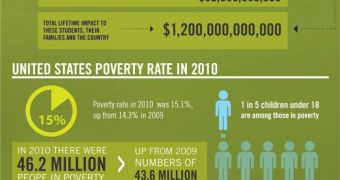Over the next three years, Microsoft will be providing no less than 1 million low-income youth in the United States with Windows PCs, cheap Broadband Internet access, education software and job skills training.
Simply by putting a computer in their homes and allowing them to take advantage of the world wide web, the Redmond company will increase their chances of graduating high school from 6 to 8%.
it might not seem as a lot, but the battle to get kids ready for the workforce environment of tomorrow is won one percentage point at a time.
According to statistics provided by the Redmond company citing IDC data, some 9.5 million U.S. students do not have access to digital resources in their home, and one in every five kids under 18 are among people in poverty.
“At Microsoft we believe all students should have access to the building blocks of a quality education,” revealed Anthony Salcito, vice president, Worldwide Education for Microsoft.
“Putting technology in the hands of a student who did not have access is a powerful step on the path leading to graduation, employability and a better future.”
Through its global Shape the Future program, the software giant has already ended digital exclusion for over 10 million students around the world. In the next three years, 1 million U.S. students will be joining them, Microsoft announced today at the Clinton Global Initiative Annual Meeting.
Microsoft will be partnering with the Federal Communications Commission (FCC), Network for Teaching Entrepreneurship (NFTE) and One Economy, as well as additional state, city, nonprofit and private organizations in order to extend its Shape the Future initiative to the next 1 digitally excluded million low-income youth.
“Roughly 100 million Americans remain unconnected to high-speed Internet, and the economic cost of digital exclusion is rising every day,” added FCC Chairman Julius Genachowski.
“This isn’t a problem for government alone. The private sector, nonprofit groups and government actors must work collaboratively to close this gap, create jobs and ensure America’s global competitiveness. Substantial commitments to bring digital access to millions more Americans are a significant step in the right direction.”

 14 DAY TRIAL //
14 DAY TRIAL //